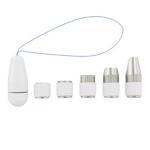“I am several weeks post-partum and I’m having trouble controlling my bladder. I’ve heard about exercises I can do but I’m not sure what they are. Can you please help me?”
Many women who experience pregnancy and childbirth will also experience some type of urinary incontinence. This is caused by several factors, including excessive weight gain, pressure from the developing baby and strain from pushing during birth. Some women may leak without any warning, while others will unexpectedly wet themselves when they sneeze, laugh or do some sort of physical activity (stress incontinence). In most cases, the loss of bladder control is temporary, lasting several weeks to several months.

The exercises you’re referring to are pelvic floor exercises, or kegels. These exercises are designed to strengthen your pelvic floor, which helps support your bladder, uterus and other organs, as well as aid in the flow of urine.
So how do you do kegel exercises? With an empty bladder, you first need to locate your pelvic floor muscles. Do so by contracting the muscles you’d use to stop your urine midstream or to prevent from passing gas. You can also insert a finger into your vagina and see if you can feel pressure around your finger.
Hold the contractions for a few seconds before releasing. Keep doing this for about 15 minutes per set. As your pelvic floor muscles get stronger, increase the length of time you hold the contraction.
If you’re having trouble identifying your kegel muscles or need help with the exercises, ask your doctor or a physical therapist who specializes in pelvic floor therapy. There are also special devices you can use to tone your vaginal muscles and increase its strength. Vaginal weights are small weighted cones which are inserted into your vagina. The goal is to squeeze your pelvic floor muscles to keep the weight from falling out.
Kegels should be done daily, at least three times per day. You may want to do a set in the morning before work, during your lunch break and after dinner at night. Each woman is different, so results will vary. However, many women have reported positive changes in bladder control after consistently doing the exercises.
